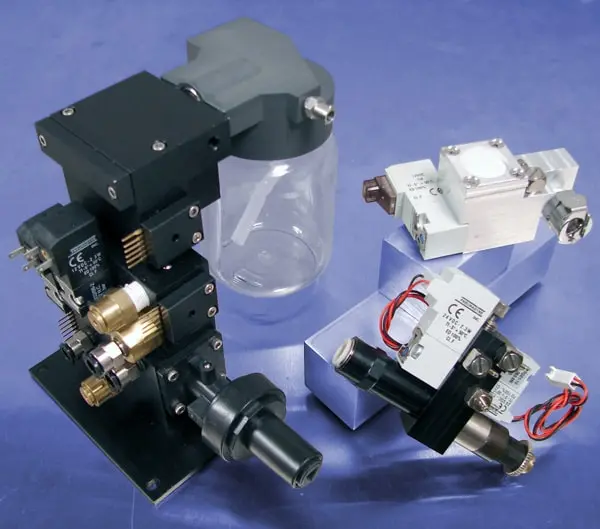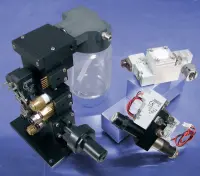Advantages of Pneumatic Component Consolidation
Recent studies have shown that in many pneumatic systems, more than 50% of the compressed air produced by the compressor may be wasted. And, in many facilities that use compressed air, roughly 20% of the electricity used—and therefore 20% of electrical costs—goes into running compressors. Depending on the size of your system, this can ultimately equate to thousands of dollars of wasted electricity (or more) over the course of a year.
Advantages of Component Consolidation
- Eliminates leak points: Component consolidation—combining multiple individual components into a single manifold system or valve block—improves the efficiency of your pneumatic circuit. Connecting tubes between components can be eliminated, and with them, multiple areas where leaks may potentially occur.
- Eases circuit installation: With fewer individual components involved, the time required to plumb and install the assembly into the application is reduced. This saves time and money on both initial installation and maintenance, and makes it easier to add new lines or components to the system later.
- Improves overall appearance: With component consolidation, multiple extended lengths of pneumatic tubing that run throughout the system can be eliminated. Less tubing results in a cleaner looking and more organized circuit.
- Reduces size requirements: Because fewer fittings, valves, and other components are required, the overall size of your pneumatic system can be significantly reduced. And, with miniaturization being a goal throughout many industries, minimizing the size of the pneumatic circuitry helps accommodate the space limitations of many modern pneumatic applications.
- Reduced inventory requirements: Pneumatic component consolidation reduces the number of components and assemblies you need to purchase and hold in your inventory for maintenance and replacement purposes.
Pneumatic Circuit Analysis for Improved Efficiency
Pneumatic circuit analysis is critical to improving efficiency. There are several key elements to consider when performing circuit analysis:
- Normal production: What are your systems actual compressed air requirements? A proper system audit eliminates the added volume that is wasted via leak points, leaving equipment attached to the system when not in use, and other factors.
- Air leaks: In addition to tubing and other connecting points, air leaks in a pneumatic system can be caused by worn cylinder or valve seals and other factors.
- Unnecessary demand: Overpressurizing your pneumatic system or using oversized or overpowered components can lead to needless demand on your compressors. Leaving compressors running when not in use (such as overnight) or leaving components attached to feedlines when not in use can also increase demand.
- Inappropriate use: Constant blow offs force compressors to run in excess duty cycles and/or with excessive loads.
Component Consolidation & Circuit Analysis from Pneumadyne
Pneumadyne will work with you to provide an accurate pneumatic circuit analysis and to consolidate components wherever possible to help you achieve optimum performance and efficiency. We will evaluate the critical requirements of your system and develop custom component consolidation solutions that reduce compressed air waste throughout the circuit.
Contact Pneumadyne today to get started on comprehensive circuit analysis and component consolidation for your facility’s pneumatic system.
|






